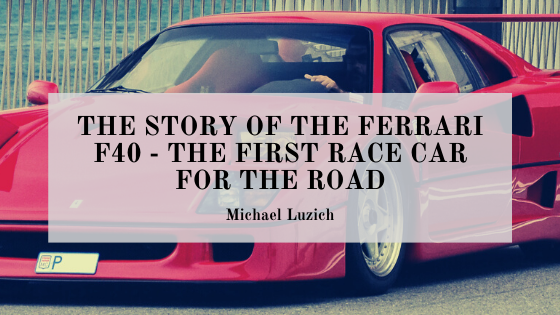The iconic silhouette ventilated with NACA ducts, the burble of the twin-turbocharged V8, and that gorgeous red paint that looks striking in any environment – it’s hard to beat the Ferrari F40 as an automotive icon.
Released in 1987, the F40 quickly took the world by storm and won the hearts of many, seemingly overnight. Unlike most other great cars produced by the brand, the F40 embraced blistering and unforgiving performance – it was a real race car for the road.
Built with motorsport as the main focus, a tubular steel space-frame chassis, bonded Kevlar panels, and of course, the carbon-fiber doors, bonnet, and boot lid make up the distinctive bodywork that set this car apart from its competitors.
The car is instantly recognizable as one of the brand’s top poster cars, but it’s the story of its creation that might be even more impressive than the machine itself.
Born from the fire of Group B rally
The words “Rally” and “Ferrari” don’t typically go together, but maybe that’s why the story of the F40 is so potent.
As early as 1984, Nicola Materazzi, Chief Engineer working at the Ferrari S.p.A., proposed taking Ferrari to the infamous Group B rally series as a marketing exercise. The series, legendary for its machinery but also for its tragical number of deaths, would see Ferrari compete against the likes of Porsche across gravel, snow, and tarmac. Permission was granted by Ferrari’s General Manager, Eugenio Alzati, under the condition that the work be undertaken outside of the factory working hours.
With the green light given and rally podiums in sight, a small team of engineers created the GTO Evoluzione. The recipe was impressive, featuring a weight of just 940kg and a twin-turbocharged V8 good for 650bhp with a top speed of 225mph.
Unfortunately, the project didn’t proceed as planned: Group B rallying faced its final days in May 1986, thanks to its dangerous reputation, the death of Henri Toivonen, and his co-driver Sergio Cresto. This left Enzo Ferrari with a total of 5 Rally project 288 GTO Evoluziones and no category for them to compete.
Instead of throwing in the towel and preparing the cars for the museum, Enzo was keen for one last hurrah and allowed Materazzi to take their rally technology and apply it to an all-new road car.
Enzo Ferrari wanted a short completion date of the project, allowing for just 11 months from beginning to end. The mechanics and designers from the Pininfarina studio used the time wisely, creating the car we now know as the F40.
The release of the F40
On unveiling day, nobody in the Ferarri factories except for close associates of Enzo Ferrari had even seen the car.
When the sheet was pulled back, the drastic change in styling sparked thunderous applause. Ultimately, a total of 1,315 supercars were produced in total between 1987 and 1992. Although some owners decided to opt for a color change, each car originally arrived in red.
The F40 was born out of sheer passion and it was the final car that Enzo was able to personally sign off – his last hurrah was—and may still be—the greatest road car ever produced.
